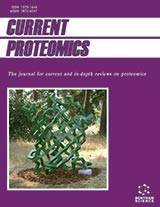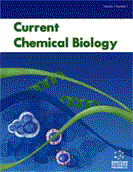Abstract
Rapid advances in gene expression microarray technology have enabled to discover molecular markers used for cancer diagnosis, prognosis, and prediction. One computational challenge with using microarray data analysis to create cancer classifiers is how to effectively deal with microarray data which are composed of high-dimensional attributes (p) and low-dimensional instances (n). Gene selection and classifier construction are two key issues concerned with this topics. In this article, we reviewed major methods for computational identification of cancer marker genes based on microarray gene expression data. We concluded that simple methods should be preferred to complicated ones for their interpretability and applicability.
Keywords: Cancer, computational biology, marker genes, microarrays.
Current Bioinformatics
Title:Identification of Marker Genes for Cancer Based on Microarrays Using a Computational Biology Approach
Volume: 9 Issue: 2
Author(s): Xiaosheng Wang
Affiliation:
Keywords: Cancer, computational biology, marker genes, microarrays.
Abstract: Rapid advances in gene expression microarray technology have enabled to discover molecular markers used for cancer diagnosis, prognosis, and prediction. One computational challenge with using microarray data analysis to create cancer classifiers is how to effectively deal with microarray data which are composed of high-dimensional attributes (p) and low-dimensional instances (n). Gene selection and classifier construction are two key issues concerned with this topics. In this article, we reviewed major methods for computational identification of cancer marker genes based on microarray gene expression data. We concluded that simple methods should be preferred to complicated ones for their interpretability and applicability.
Export Options
About this article
Cite this article as:
Wang Xiaosheng, Identification of Marker Genes for Cancer Based on Microarrays Using a Computational Biology Approach, Current Bioinformatics 2014; 9 (2) . https://dx.doi.org/10.2174/1574893608999140109115649
| DOI https://dx.doi.org/10.2174/1574893608999140109115649 |
Print ISSN 1574-8936 |
| Publisher Name Bentham Science Publisher |
Online ISSN 2212-392X |
 23
23
- Author Guidelines
- Bentham Author Support Services (BASS)
- Graphical Abstracts
- Fabricating and Stating False Information
- Research Misconduct
- Post Publication Discussions and Corrections
- Publishing Ethics and Rectitude
- Increase Visibility of Your Article
- Archiving Policies
- Peer Review Workflow
- Order Your Article Before Print
- Promote Your Article
- Manuscript Transfer Facility
- Editorial Policies
- Allegations from Whistleblowers
Related Articles
-
Nanomaterial Based Approaches for the Diagnosis and Therapy of Cardiovascular Diseases
Current Pharmaceutical Design Comparative Proteomics and Bioinformatics Analysis of Tissue from Non-Small Cell Lung Cancer Patients
Current Proteomics Toxic Epidermal Necrolysis and Antifolate Drugs in Cancer Chemotherapy
Current Drug Safety Metallothioneins and Cancer
Current Protein & Peptide Science Lung Cancer: Are we up to the Challenge?
Current Genomics Epigenetic Aberrations and Targeted Epigenetic Therapy of Esophageal Cancer
Current Cancer Drug Targets Use of Anticancer Platinum Compounds in Combination Therapies and Challenges in Drug Delivery
Current Medicinal Chemistry Statins-Mediated Inhibition of Rho GTPases as a Potential Tool in Anti-Tumor Therapy
Mini-Reviews in Medicinal Chemistry Platinum Formulations as Anticancer Drugs Clinical and Pre-Clinical Studies
Current Topics in Medicinal Chemistry Gefitinib Targets EGFR Dimerization and ERK1/2 Phosphorylation to Inhibit Pleural Mesothelioma Cell Proliferation
Current Cancer Drug Targets New Generation of Oncolytic Herpes Virus
Current Cancer Therapy Reviews Xanthohumol: A Metabolite with Promising Anti-Neoplastic Potential
Anti-Cancer Agents in Medicinal Chemistry Phase 1 Clinical Experience Using Intravenous Administration of PV701, an Oncolytic Newcastle Disease Virus
Current Cancer Drug Targets Role of α7-Nicotinic Acetylcholine Receptor in Normal and Cancer Stem Cells
Current Drug Targets Hepatoma-Derived Growth Factor in Carcinogenesis and Cancer Progression
Current Drug Therapy Cancer Stem Cells Switch on Tumor Neovascularization
Current Molecular Medicine Discovery and Application of the Yoshida Effect: Nano-Sized Acicular Materials Enable Penetration of Bacterial Cells by Sliding Friction Force
Recent Patents on Biotechnology Matching Chelators to Radiometals for Positron Emission Tomography Imaging- Guided Targeted Drug Delivery
Current Drug Targets Dual Role of Heat Shock Proteins (HSPs) in Anti-Tumor Immunity
Current Molecular Medicine Glycomics: Relevance for Personalized Medicine
Current Pharmacogenomics and Personalized Medicine

















.jpeg)








